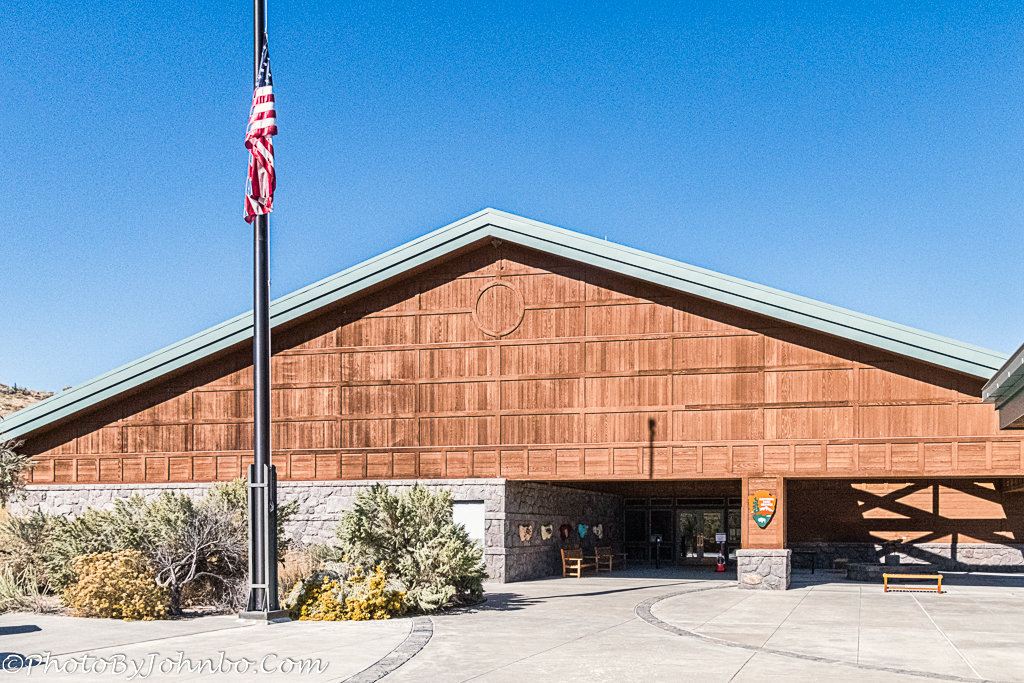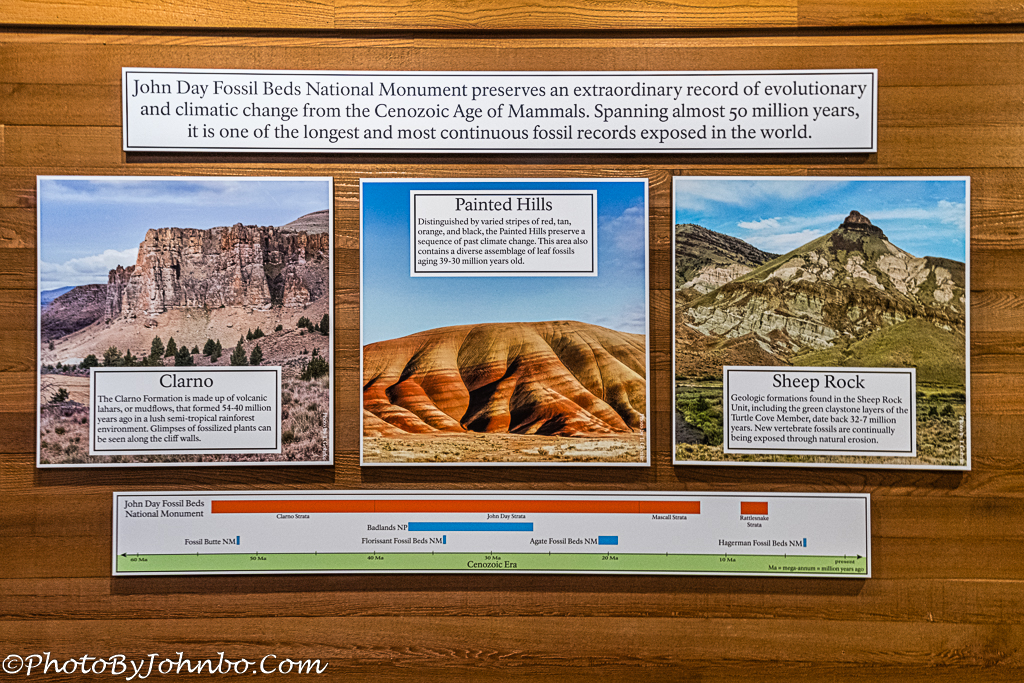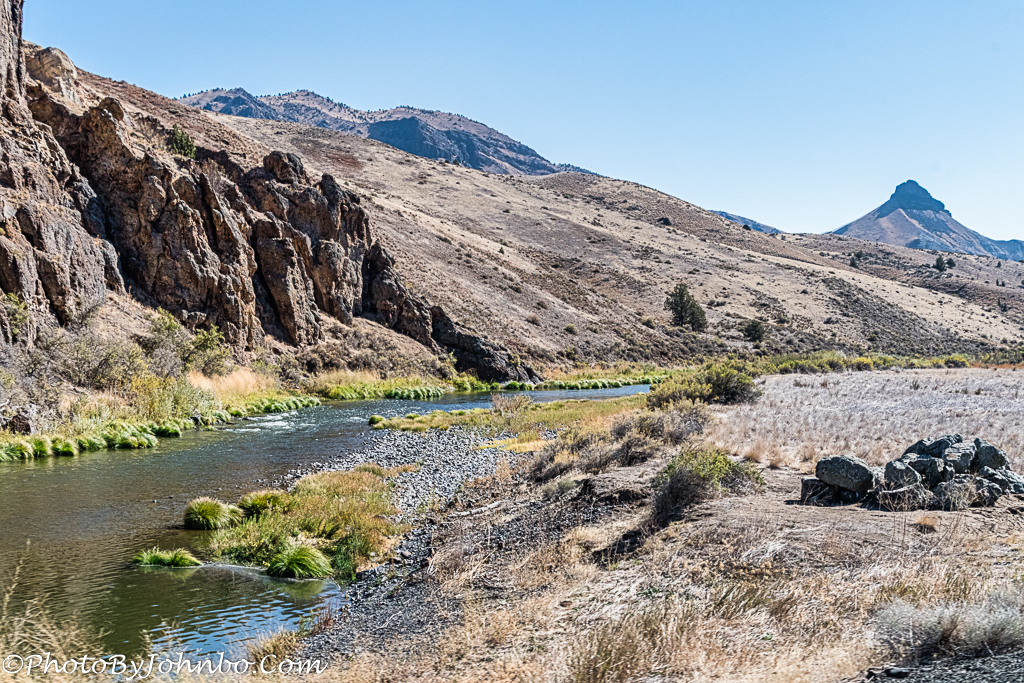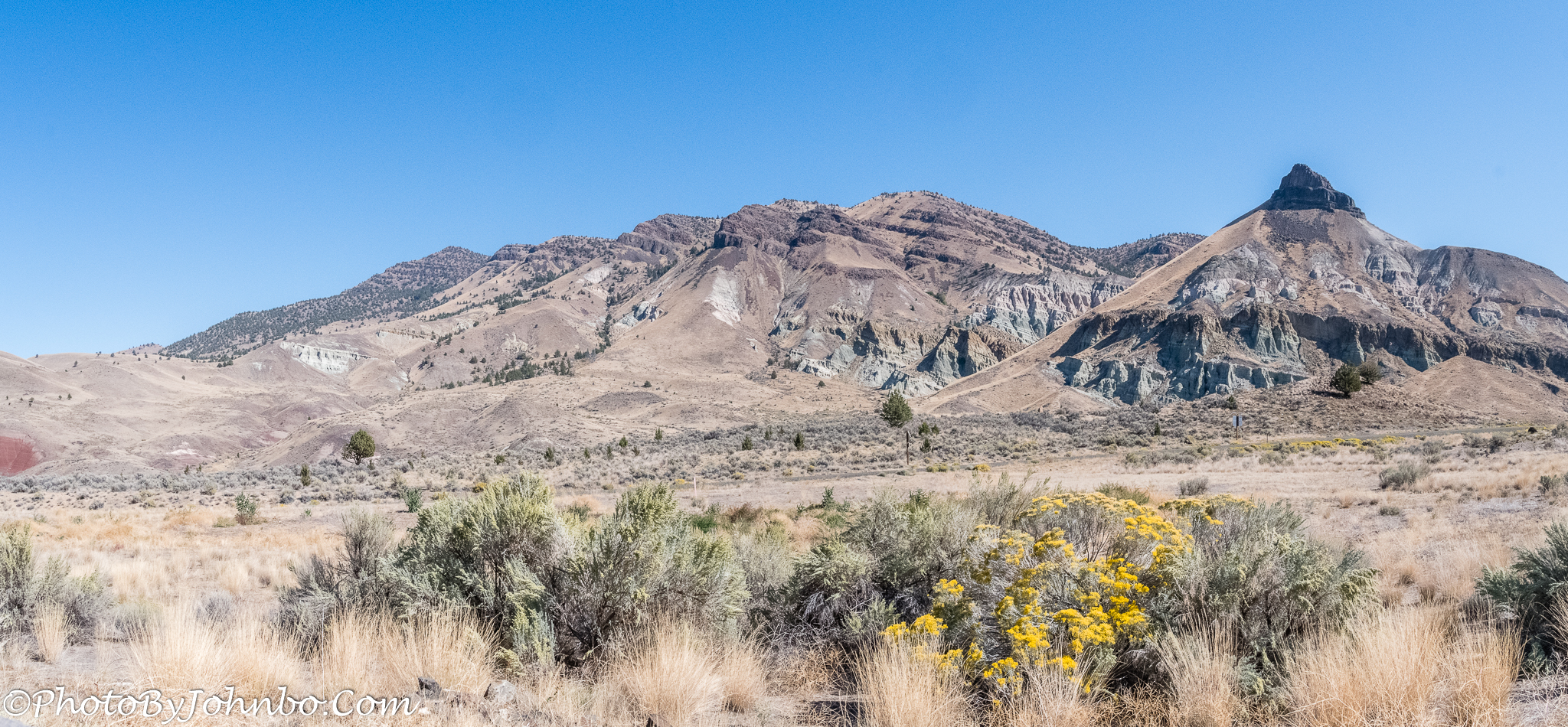I interrupt this weekly travel post with a comment to my fellow bloggers. I love reading and commenting on blog posts written by those I follow. I am way behind, taking over a week off from my reading as we did some traveling on our journey back to North Dakota for the summer. I’ll be playing “catch up” in my reading over the next few days.
Now back to our regularly scheduled travel post.
Kimberly, Oregon.
Last week, dear reader, I presented photos of our visit to the John Day Fossil Beds, Clarno Unit. At the time, we didn’t know there are actually three units to the national monument. I was to find out later that Clarno is the least visited unit of the park. Besides Clarno, there is Sheep Rock, with the nearby Thomas Condon Paleontology Center, and the Painted Hills unit. As we continued on our journey along the Journey Through Time Scenic Byway, we arrived at the Thomas Condon Paleontology Center, and basically, just across the highway, Sheep Rock, (the peak with the dark top) pictured above.
The Sheep Rock Unit features seven hiking trails, all short, ranging from .25 miles (.4 km) to 3.25 miles (5.2 km) in length. The longest trail is also the most difficult, rated on the website as moderate to strenuous with a 600-ft (183 m) elevation change. Details on the trails can be found here.
The center was open with limited capacity on the day we visited, but as I am writing this post in late March 2021, their website here tells me the center is now temporarily closed. Be sure to check the status of the facility online prior to making the trip (not that there isn’t plenty to see outdoors in the area.) All outdoor areas of the park are open at this writing.
Inside the center, behind a large viewing window, a worker painstakingly cleans a fossilized bone that was found somewhere in the area. Also inside the center, on display, are over 500 fossilized remains.
On a wall at the center, a set of plaques describe the park and its mission of preserving the record of 50 million years in fossilized remains. The building opened in 2005 and is named for a prominent 19th-century scientist who began the scientific collection and study of fossilized specimens. You can even see what’s going on inside the center and at the three units of the park in advance by checking the park’s webcams here.
The scenery along Highway 19, which is part of the Journey Through Time Scenic Byway, is spectacular. I happened to capture this image while traveling along the highway. I would not realize until reaching the center and reviewing images later that Sheep Rock is visible in the right background of this photo. In a future post, I’ll be featuring more images captured along this scenic byway.
The view of Sheep Rock and the nearby landscape is readily visible from the paleontology center’s parking lot. For my final image of this post, I combined three images to create a panoramic view of the Sheep Rock Unit of the John Day Fossil Beds National Monument. As always, I recommend clicking on the images to get a better view if your browser supports the function.
John Steiner







The second installment on the fossil beds are as enthralling as your first, John, and I am looking forward to the next with great expectations! (As I do to read about your trip up to North Dakota!)
When I think of all the places I could visit in the United States, it makes me wonder why I want to see other parts of the world… yet I do.
On our way back to North Dakota, we visited an ice cave in New Mexico that has a frozen lake at the bottom. The cave stays around zero degrees C even in the hot New Mexico summers.
John, I love this post. Oregon is one of my favorite places, but I have never been here. Your pictures are gorgeous. Most people think of Oregon as cloudy and gray, but this part of Oregon is a different climate than the Willamette Valley. 🙂
We have family that lives in southern Washington, so we have spent a little time in Oregon, but our trip across the state last fall is the longest we’ve spent there.
There’s not too much difference between northern Oregon and southern Washington. A huge difference between western and eastern Oregon and Washington. 🙂
From my limited experience, I noticed that as well.